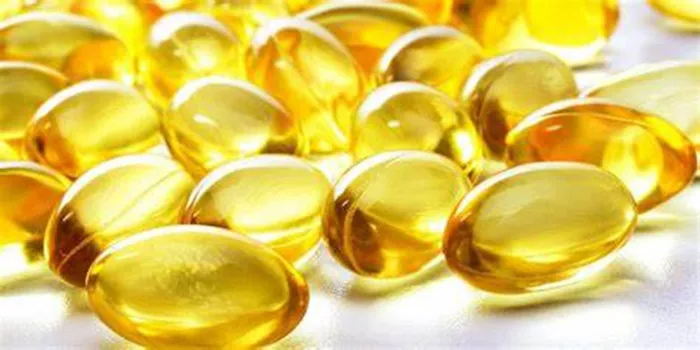Vitamin E is a fat-soluble nutrient found in many foods and often available as a dietary supplement. It’s also a key ingredient in numerous skincare products due to its antioxidant properties. Over the years, vitamin E oil has gained popularity as a remedy for various skin ailments, including cuts and scars. However, its effectiveness in wound healing is still a topic of debate among healthcare professionals. This article delves into the science behind vitamin E oil, examining vitamin E’s potential benefits and risks when applied to cuts.
Understanding Vitamin E
Vitamin E is a collective term for a group of eight compounds, including tocopherols and tocotrienols, which have varying degrees of biological activity. Alpha-tocopherol is the most active form in humans and is commonly used in supplements and skincare products. Vitamin E is renowned for its antioxidant properties, which help protect cells from oxidative damage caused by free radicals. This antioxidant capability is why vitamin E is frequently incorporated into topical applications aimed at promoting skin health and healing.
The Science Behind Vitamin E and Wound Healing
Wound healing is a complex process that involves several stages: hemostasis, inflammation, proliferation, and remodeling. Each stage requires specific cellular and molecular activities. Antioxidants like vitamin E are thought to aid in the healing process by reducing oxidative stress, which can impede wound healing and exacerbate inflammation.
Antioxidant Properties
Oxidative stress occurs when there is an imbalance between free radicals and antioxidants in the body. Free radicals are highly reactive molecules that can cause cellular damage, leading to inflammation and delayed wound healing. Vitamin E, as an antioxidant, neutralizes free radicals, thereby potentially reducing oxidative stress and promoting a more conducive environment for wound repair.
Anti-Inflammatory Effects
Inflammation is a critical component of the wound healing process, but excessive inflammation can lead to complications. Some studies suggest that vitamin E has anti-inflammatory properties, which may help modulate the inflammatory response and promote more efficient healing. This anti-inflammatory action is particularly beneficial during the early stages of wound healing, where controlling inflammation is crucial.
Skin Barrier Function
The skin’s barrier function is essential for protecting against infections and retaining moisture. Vitamin E is believed to enhance the skin’s barrier function, which can be particularly beneficial for healing cuts. By maintaining skin hydration and integrity, vitamin E may prevent infections and reduce the risk of scarring.
Clinical Evidence: Vitamin E Oil for Cuts
Despite its theoretical benefits, the clinical evidence supporting the use of vitamin E oil for cuts is mixed. Numerous studies have investigated its efficacy in wound healing, but results vary.
Positive Findings
Some studies have shown that vitamin E can accelerate wound healing and reduce scarring. For example, a study published in the “Journal of Plastic and Reconstructive Surgery” found that topical application of vitamin E reduced the formation of hypertrophic scars in surgical wounds. Another study in the “Journal of Dermatological Science” reported that vitamin E improved the cosmetic appearance of scars.
Conflicting Results
Conversely, other studies have found no significant benefits of vitamin E in wound healing and, in some cases, reported adverse reactions. A study in the “Journal of Burn Care & Rehabilitation” found that vitamin E did not significantly improve the healing of burn wounds compared to a placebo. Additionally, some individuals experienced allergic reactions or dermatitis from topical vitamin E, suggesting that it may not be suitable for everyone.
Risks and Side Effects of Vitamin E Oil
While vitamin E oil is generally considered safe for most people, it is not without potential risks and side effects, particularly when applied to open wounds or sensitive skin.
Allergic Reactions
One of the primary concerns with using vitamin E oil on cuts is the risk of allergic reactions. Some individuals may develop contact dermatitis, characterized by redness, itching, and swelling at the application site. It is essential to perform a patch test before using vitamin E oil on a larger area of the skin, especially on open wounds.
See Also: What’s Better for Weight Loss: Exercise Bike or Treadmill?
Delayed Wound Healing
In some cases, vitamin E may delay wound healing rather than promote it. This paradoxical effect could be due to its impact on the balance of free radicals and antioxidants. While antioxidants are crucial for protecting cells, an excess can potentially interfere with the normal wound healing processes that rely on controlled oxidative stress.
Infection Risk
Applying any oil to an open wound carries a risk of infection. Oils can create a barrier that traps bacteria and other pathogens, potentially leading to infections. It is crucial to ensure that the wound is clean and properly cared for before applying any topical treatment, including vitamin E oil.
Guidelines for Using Vitamin E Oil on Cuts
Given the mixed evidence and potential risks, it is essential to follow certain guidelines if considering the use of vitamin E oil on cuts.
Consult a Healthcare Professional
Before applying vitamin E oil to a cut, consult with a healthcare professional, especially if the wound is severe or shows signs of infection. A medical professional can provide personalized advice based on the specific nature of the wound and the individual’s health history.
Patch Test
Perform a patch test by applying a small amount of vitamin E oil to an area of unbroken skin and observing for any adverse reactions over 24-48 hours. If any signs of irritation occur, avoid using the oil on the wound.
Proper Wound Care
Ensure that the wound is thoroughly cleaned and properly cared for before applying vitamin E oil. This includes washing with mild soap and water, applying an antiseptic if necessary, and covering the wound with a sterile bandage.
Moderation
Use vitamin E oil sparingly. A small amount can go a long way, and over-application may increase the risk of adverse reactions or delayed healing.
Conclusion
Vitamin E oil has garnered attention for its potential benefits in wound healing, largely due to its antioxidant and anti-inflammatory properties. While some studies support its use in reducing scarring and promoting healing, the evidence is not unanimous, and there are notable risks, including allergic reactions and potential delays in wound healing.
For those considering vitamin E oil as a treatment for cuts, it is crucial to consult a healthcare professional, conduct a patch test, and ensure proper wound care. Alternatives such as honey, aloe vera, petroleum jelly, and over-the-counter antibiotic ointments may offer safer and more effective options for treating cuts.
In conclusion, while vitamin E oil may have some benefits for wound healing, it is not a one-size-fits-all solution. Careful consideration and professional guidance are essential to ensure the best outcomes for skin health and wound recovery.
[inline_related_posts title=”You Might Be Interested In” title_align=”left” style=”list” number=”6″ align=”none” ids=”10181,10093,9991″ by=”categories” orderby=”rand” order=”DESC” hide_thumb=”no” thumb_right=”no” views=”no” date=”yes” grid_columns=”2″ post_type=”” tax=””]

































